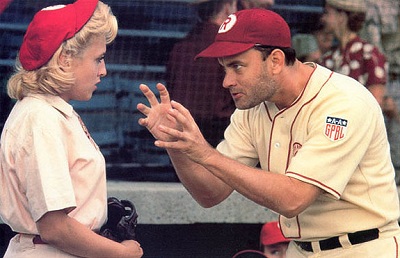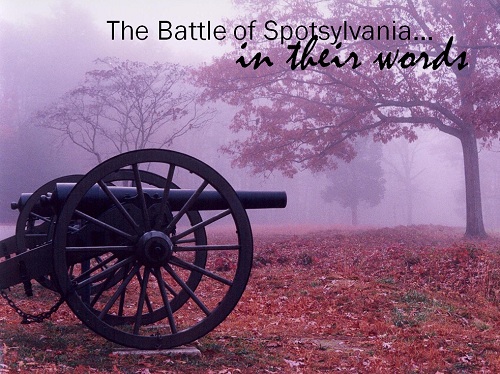
Photograph by John Cummings III
Last night’s talk at the Richmond Civil War Roundtable couldn’t have gone better. They had a record crowd for the month of May and I could not have asked for a better audience. It was a real thrill for me to meet folks like Waite Rawles III and John Coski of the Museum of the Confederacy and Brent Morgan from the Virginia Genealogical Society. Thanks to this event, I also have a couple tentative talks scheduled for the Sons of the American Revolution. My presentation was titled “The Battle of Spotsylvania: In Their Words” and it focused on the firsthand experiences of Confederate soldiers at Spotsylvania. Here are the transcripts:
Thank you. Good evening ladies and gentlemen. It is a real thrill for me to be here tonight. The Richmond Civil War Roundtable is among the most prestigious in the country and to be invited here as your guest speaker is a real privilege indeed. I am very fortunate in my work as I get to do a lot of talks, on a lot of topics, and when we were discussing my theme for this evening we finally settled on The Battle of Spotsylvania, or more specifically, the day-to-day campaign experiences of the soldiers who were both engaged and encamped there.
I wanted to take that topic one step further tonight and present the Battle of Spotsylvania with the actual words of those who experienced it firsthand. The letters that I will be reading tonight are from the collection that I used in my book titled Campfires at the Crossroads: The Civil War in Spotsylvania County. Most of them were found in the Fredericksburg/Spotsylvania National Military Park archives, and some of the originals are part of the collection at the Museum of the Confederacy.
In an effort to write home, these troops unwittingly recorded their own legacy. In essence, they (being the average soldier in the Army of Northern Virginia) played the vital role of newsman, similar to today’s embedded journalist. If you are interested in this book or any of my books or films, I have information available along with a special discount for anyone who uses these flyers for ordering. I will also be happy to take questions or discuss anything further when I’m done.
My goal tonight is the same that I had with this book, to present an honest depiction of Johnny Reb’s wartime experiences without relying on the “romance and pageantry” that sometimes infiltrates these types of discussions.
Because we all know that it wasn’t always glorious…In fact more often than not, it was anything BUT glorious…For example, this photo, to me, is the antitheses of the glorification of war and sums up everything we could hope to recognize about the courage and sacrifice of the average Civil War soldier. Just imagine this being your son. I have four children, 2 are boys, and I cannot imagine what it was like for parents to see their kids march off to war and return home mutilated. This perspective is why I went from writing books glorifying generals to books about the sacrifice of citizens and soldiers.
As a battlefield tour guide, folks sometimes ask me what sets Fredericksburg and Spotsylvania apart from other hallowed grounds. What makes them special? I remind them that if you visit other battlefields such as Gettysburg, Antietam, or Manassas, you will see giant equestrian statues memorializing the commanders at these engagements. Lee, Jackson, Longstreet, Meade, Reynolds…all stone sentinels - all dominating the landscape. But when you visit the fields at Fredericksburg, you will see no such monuments. In fact, the only statue that you will see on the battlefield proper is the Richard Kirkland monument which depicts two common infantrymen. Spotsylvania Battlefield is also vacant of these marquee statues. There are no sword wielding titans.
So despite the fact that the most recognized officers on both sides of the war were present during these battles, it was the contributions of the common soldier that they chose to commemorate. And THAT is what makes our battlefields different. The ‘grunts’ get the credit and it is ‘their story’ that I believe we need to share during this Sesquicentennial.
Now the Confederate Army’s time in Spotsylvania was not limited to this single engagement. You have to remember that this region witnessed four major engagements over the course of the war including the: Battle of Fredericksburg in 1862, Battle of Chancellorsville in 1863, and the Battles of the Wilderness and Spotsylvania in 1864. So there were Confederate troops occupying the area throughout the entire course of the war. And directly across the Rappahannock River, in Stafford County, over 140 thousand Union troops remained stationed. From 1861 to 1865, hundreds of thousands of troops from both sides of the conflict marched through, fought at and camped in the woods and fields of Spotsylvania County and the surrounding area.
The National Park Service christened the region “the Bloodiest Landscape in North America,” stating that over a four-year period more than eighty-five thousand men were wounded and over fifteen thousand were killed. A number of exceptionally significant events also took place in the vicinity, including the first clash between Grant and Lee, as well as the first recorded skirmish between the Southern forces and U.S. Colored Troops.
Spotsylvania was also the site of the infamous death of General John Sedgwick. That is actually the very first marker that you will see upon entering the Battlefield. On May 9, 1864 Sedgwick’s corps (the VI) were probing skirmish lines ahead of the left flank of Confederate defenses and he was directing artillery placements. Confederate sharpshooters were about 1,000 yards away and their shots caused members of his staff and artillerymen to duck for cover. Sedgwick strode around in the open and was quoted as saying, “What? Men dodging this way for single bullets? What will you do when they open fire along the whole line? I am ashamed of you. They couldn't hit an elephant at this distance.”
Although ashamed, his men continued to flinch and he repeated, “I'm ashamed of you, dodging that way. They couldn't hit an elephant at this distance.” Just seconds later he fell forward, mortally wounded with a bullet hole below his left eye. In this instant of irony, Sedgwick became the highest ranking Union casualty of the war. Tonight however, I plan to focus not on the generals, but rather on a handful of recollections of soldiers who were engaged and encamped at and around The Battle of Spotsylvania….
This battle, (from May 8th to the 21st) also referred to as the Battle of Spotsylvania Court House, was the second major battle in Grant’s 1864 Overland Campaign. Following the horrific but inconclusive Battle of the Wilderness, the Federal army disengaged from Lee’s Army and moved to the southeast, attempting advance on Richmond and lure the Confederates into a fight under better conditions than they had experienced at the Wilderness. Grant and Meade’s movements stalled at Spotsylvania Courthouse on May 8 and this allowed the Army of Northern Virginia, who were in pursuit, an opportunity to catch up and engage them. The result was a bloody, two-week battle that included multiple combats along the Spotsylvania front.
The Union attack against the Bloody Angle at dawn, May 12-13, captured nearly a division of Lee’s army and came near to cutting the Confederate army in half. Confederate counterattacks plugged the gap, and fighting continued unabated for nearly 20 hours in what may well have been the most ferociously sustained combat of the Civil War. On May 19, a Confederate attempt to turn the Union right flank at Harris Farm was beaten back with severe casualties. Union generals Sedgwick (VI Corps commander) and Rice were killed. Confederate generals Johnson and Steuart were captured and Daniel and Perrin mortally wounded. On May 21, Grant disengaged and continued his advance on Richmond.
Now that’s the overview, but what REALLY happened there? Our first recollection comes to us from Michael F. Rinker, Company F, 136th Virginia Militia, to his parents. This is a longer letter when compared to most and it does an excellent job of describing the typical action witnessed at The Battle of Spotsylvania. It reads:
Camp Near Spotsylvania Court-House Va
Tuesday May the 17th 1864Dear Father and Mother,
With pleasure I write to you this morning, hoping you may get this in due time. I am well, and hope you are all well. I must ask you to excuse me for not writing sooner, indeed I am ashamed that I have not written ere this. But now I will tell you why I did not write to you sooner than I did.
We have been so busy since we came over here, that indeed this is the first chance that I have had to write. The second day after we arrived here, we commenced fighting and it is not over yet. Father indeed for 5 days we were so busy fighting that we could hardly get time enough to eat our meals.
Today it is 14 days since we commenced fighting and yesterday the cannon and small arms were still at work. But the fight was not real heavy all the time, the hardest fighting was on the 5.6.& 7 and on the 9, 10 & 11 days of this month. During them six days it was awful. There was one continual roar of thunder all the time from the artillery and small arms.
For six days the Battle was kept up, all the time day and night, in the dead hour of midnight, the cannon & musketry was thundering all the time. Column after column the Yankees pushed their men up to our Breastworks and our men were cutting them down as fast as flies.
The dead Yankees are heaped up in piles half as high as a man, in front of our Breastworks, and all around on the Battlefield the dead yanks are lying just as thick as they can be, and none of them buried, they will all rotten on top of the ground.
Now you may know how it is down here. The line of Battle is 15 miles long, and for 4 days the Battle was kept up all along the line. The Yankee loss in killed and wounded is awful. Their loss will not fall short of fifty five hundred in killed and wounded, and their loss in prisoners, will reach ten or twelve thousand.
We have captured 12 or 15 fine pieces of artillery and 6 or 8 thousand small arms. The yanks lost in killed, 2 Major Generals and 3 or 4 Brigadier Generals, and their loss of Officers generally in killed wounded & prisoners is large. Their entire loss is very heavy, and I think it will be larger yet, before the fight is ended.
All the men say that this has been the hardest fight, since the war. It was awful for about 5 days, the cannon just kept one continual roar of thunder, day and night. I suppose you have heard, of the number of killed and wounded, of our company.
You have also, no doubt heard that General J.E.B. Stuart died a few days ago from a wound received near Hanover Junction. General Longstreet was painfully wounded on the second day of Battle. But he is getting well fast.
General Lee got a dispatch yesterday afternoon from General Breckinridge stating that he had whipped and routed the yanks 2 miles above New Market and run them to Mt. Jackson where the yanks burnt a Bridge. We are all glad to hear, that the yanks have been whipped in the valley. Noah is well.
We have plenty to eat. Noah give me the things that you sent to me and I am very much obliged to you for them. I will try and bring something when I get home. Tell mother, I would like to have one pair of socks sent to me by the first one of our men that comes over.
Write soon and give me all the news. I hope you will excuse me for not writing sooner, for indeed I did not have time hardly to eat my meals, we were busy all the time.
Our men are still in line of Battle, day & night all the time, some times they commence fighting at midnight. There is no telling how much longer the fight will last. Our men lay in our Breastworks day and night.
One night last week the yanks charged our Breastworks 9 different times, and every time our men run them back, with great slaughter. If I can get time I will write to you soon or as soon as I hear from you all. I will close.
Your son, Mike.
With these words you can get a real sense of the rigors of this engagement…This was a marathon of killing that literally went on for days and weeks. I’m amazed at the promise that is proposed in the piece. Despite the desperateness of their situation this guy sounds confident that they will prevail. Our next account is from Walter Battle (an appropriately named chap) who was a private in the 4th North Carolina Infantry Regiment. As a member of Ramsuer’s Brigade he saw heavy fighting at Spotsylvania on May the 11th and 12th and drove the enemy from the captured Mule Shoe on the 12th. He wrote the following:
Our brigade after, we had charged and run the Yankees from their works, was not long enough to cover the line held by Johnston’s division, so the Yankees held a position on our right, upon a hill which enabled them to keep up an incessant enfilading fire upon us; two thirds of the men which we lost were done in that way. Men were killed while squatting just as low and as close to the breastworks as it was possible for them to get.
Tom Atkinson, poor fellow, was shot through the head, right by my side, another man in Company “E” was killed on the other; the man in front was shot through the body. I did not realize then what a hot place we were in. It was a wonder to me that the last one of us was not killed. We were exposed to that fire for twenty-two hours.
Gen. Rodes sent word to Gen. Ramseur he would send his reinforcements, but Gen. R. sent him word that he had taken the position and he was confident his brigade would hold it. All he wanted to let us alone and send us ammunition, which he did. I shot away 120 rounds of cartridges myself, three cartridge boxes full.
That’s 120 rounds fired by himself in a single engagement. Now to get a feel for the amount of fire that was laid down during that battle there is a sign on the Spotsylvania Battlefield that marks the site of a 22-inch tree that was supposedly felled by small arms fire. The trunk is on display at the Smithsonian Museum of American History in Washington DC. Pvt. Battle also wrote on May 14th that:
Last Thursday though is the day that will be remembered by both armies as long as one man is left to tell the tale. At daylight they attacked the line a little to our right, drove our men out of both lines of breastworks and the result was hanging in the scales when our brigade was taken from one position and moved around in front of them.
The stars and stripes were floating proudly all along our works when the order was given to "forward without firing." We commenced moving up pretty briskly, when our men commenced falling so fast, that the order was given to "double quick." No sooner said than done.
We rushed forward with a yell and took the first line of works like a flash. We remained there long enough to fire a round or two and clear the way in front of us, when the order came to charge the other. We took that also with a large number of prisoners, then the fight commenced in earnest.
It was a continuous charge and a war of musketry from that time, nine o'clock, until three o'clock in the morning, when we evacuated that line for another which had been established and fortified during the night.
There is not a man in this brigade who will ever forget the sad requiem, which those minie balls sung over the dead and dying for twenty-two long hours; they put one in mind of some musical instrument; some sounded like wounded men crying; some like humming of bees; some like cats in the depth of the night, while others cut through the air with only a "Zip" like noise.
I know it to be the hottest and the hardest fought battle that has even been on this continent. You would hardly recognize any of us at present. Every one looks as if he had passed through a hard spell of sickness, black and muddy as hogs. There was no one too nice that day to drop himself behind the breastworks. Brigadiers and Colonels lay as low in the trench and water as the men.
It rained all that day and night, and the water was from three to six inches deep all along. If it had been winter the last man would have been frozen. I am too worn out to write anything of any interest. I am about half deaf yet, as is every one else from the effects of the cannonading. My love to all, and believe me, your sincere son,
So far we've heard from the enlisted men. For an officer’s point of view on Spotsylvania we can turn to the mapmaker of the Confederacy Jedediah Hotchkiss who wrote a letter to his wife Sara on May 15, 1864. He writes:
May 15th 1864
Hd. Qrs. 2nd Corps -- Near Spotsylvania C. H. --My Dear Sara --
I wrote you a few lines day before yesterday, immediately after our desperate battle & hope they reached you -- we have not had any fight since then -- only a little skirmishing -- the enemy has fallen back from our left & we drove him back on our right, he is still lying between us & the river -- not daring to attack & unwilling to retreat -- his losses have been great -- as we find many dead in the lines he has abandoned -- many more than we have lost –
Our loss has been far less than at Chancellorsville -- 3500 it is thought will cover all our losses since we started, & we have captured some 4500 of the enemy -- saying nothing about the killed & wounded -- the Yankee papers say the lost 20000 in the first fight -- if so they have lost 50000 in all -- too large an estimate I suppose, but not much, for they made 8 or 10 attacks upon our breastworks, where our men were defended & protected & were repulsed with terrible slaughter we are cheered today by the news from the Valley
-- but saddened, deeply saddened by the death of Gen. J. E. Stuart -- one of the noblest spirits in the Confederacy -- peace to his ashes, his memory is embalmed in the hearts of his countrymen -- for he has done noble service for us -- he has gone to join our noble army of sainted heroes above, Jackson, Ashby & hundred upon hundreds more -- Heaven console his wife & defend her & his babes -- how little I thought I witnessed their last farewell when I saw them part at Orange C. H. the day I first came back to camp. Gen. Daniels has died too, a noble North Carolinian –
Heaven has been merciful to us in enabling us to keep back the past that came like an army of locusts, but what a sacrifice have we made to propitiate the favor -- I suppose we shall have to fight Grant again & perhaps not far from here, but I have an abiding confidence in our ability to cope with him, by Divine assistance, -- his army has become demoralized by his repeated & unsuccessful attacks, though he gained some temporary advantages & took considerable artillery from us –
yet his men know that he has made no advance towards conquering our army & that he has made no progress towards Richmond -- the time of many of them is out & they are going home -- the larger portion of his veterans has been destroyed or captured --
May 16th All quiet still this morning -- we are in the same position, the enemy has gone towards Fredericksburg -- we have had heavy rains every day & it is very muddy -- I have no time to write more -- Love & Kisses for you all & may Heaven bless you -- Write often --
Your Aff husband
Jed. Hotchkiss
He’s also confident, but you can also get a sense of his trepidation which of course was warranted. At this point in the conflict, it was quickly becoming a war of attrition. Our next piece is actually a pair of letters that reinforce the tragedy of war on the home front. The first is a very brief note from Isaac Newton Cooper of the 3rd South Carolina Infantry to his sister that was written when he was encamped in Fredericksburg with the latter coming during the Battle of Spotsylvania.
Now the 3rd South Carolina was part of General Joseph B. Kershaw’s Brigade, in the First Corp. under Major General Richard Heron Anderson. Retired NPS Ranger Mac Wycoff, who I am sure you are all familiar with wrote and excellent bio on this unit titled A history of the Third South Carolina Infantry, 1861-1865. His letter reads:
Camp near Fredericksburg
April 18, 1863To Sister E.F. Cooper (Edney)
Give my respects to Minervy Cooper. Tell Sister Mary they must write to me. They must nor forget me because I am so far away. Give my love to Brother Dave. Be good boys and stop swearing as it is a bad habit.
Lt. I.N. Cooper
This was followed one year later by a subsequent death notification after Cooper was killed in action and buried at Spotsylvania, Virginia, on or about May 16, 1864. It reads:
Near Spottsylvania C.H. May (16), 1864
It becomes my painful duty to inform you that your husband Lt. I.N. Cooper was mortally wounded on the 8th of May near this village it will indeed be painful intelligence to you and his children to learn of your great loss—he was wounded in the head by a bomb shell and has been lying insensible ever since.
The Surgeon thinks he will die in a few hours. I was in hopes at first that he would recover & be to you & his country but he is getting worse. He was a true friend to me and a brave officer and soldier lost one of my best friends and his country a true and gallant officer and your loss is greater than all.
He was anxious to live through this war on account of you and his children and he never lay down at night without praying for you and his children.
So this letter was the equivalency of the Yellow Telegrams that wartime widows received during World War II. You have to remember that this one fight resulted in close to 30,000 total casualties.
Estimated numbers of dead are close to or just over 3000 Union troops and between 1500-1700 Confederates lost.
The last letter I would like to share with you personifies the entire focus of our talk tonight. Perhaps no other transcript in this collection better represents the sacrifice of soldiers who were encamped in the Spotsylvania area than this letter penned by Private James Robert Montgomery. Private Montgomery was a courier enlisted in Company A of the 11th Mississippi Infantry. On May 10, 1864, he was struck by a shell fragment while attempting to deliver communications for General Heth. As he lay dying from a mortal wound, he wrote the following letter to his father:
Spotsylvania County, Va.
May 10Dear Father
This is my last letter to you. I went into battle this evening as courier for Genl. Heth. I have been struck by a piece of shell and my right shoulder is horribly mangled & I know death is inevitable.
I am very weak but I write to you because I know you would be delighted to read a word from your dying son. I know death is near, that I will die far from home and friends of my early youth but I have friends here too who are kind to me.
My friend Fairfax will write you at my request and give you the particulars of my death. My grave will be marked so that you may visit it if you desire to do so, but it is optionary with you whether you let my remains rest here or in Miss.
I would like to rest in the grave yard with my dear mother and brothers but it’s a matter of minor importance. Let us all try to reunite in heaven.
I pray my God to forgive my sins and I feel that his promises are true that he will forgive me and save me. Give my love to all my friends. My strength fails me. My horse and my equipments will be left for you. Again, a long farewell to you. May we meet in heaven.
Your dying son,
J.R. Montgomery
So there we have several looks at the Battle of Spotsylvania as seen through the eyes of those who actually fought and died there. Their words serve as a valuable reminder for a number of reasons. Living in Virginia, we are all blessed to live in a state that is so rich in Civil War history. With all of these historical places surrounding us, it is very easy to forget the awful hardships and carnage that took place here.
As a guide I often find myself reminding my clients of this fact. You see, when you come to the Old Dominion and tour the hallowed grounds, everything is perfect. The grass is neatly trimmed and the markers are polished. The freshly painted cannons are all lined up neatly and the landmark buildings are restored to their original splendor. But we must consciously remind ourselves that the beauty that surrounds us is a façade and that the men that fought and died here baptized the soil in their blood.
That is the part of Civil War memory that must not be taken for granted. We must strive to remind others that although our Battlefields (like Spotsylvania) are beautiful, that events that took place there were anything but. We can do this by preserving and presenting their words for future generations. Only then will we truly acknowledge the memory of the common Civil War soldier, and give them their proper place in our nation’s story.
Thank you.
Updated: Wednesday, 9 May 2012 11:43 AM EDT
Permalink | Share This Post







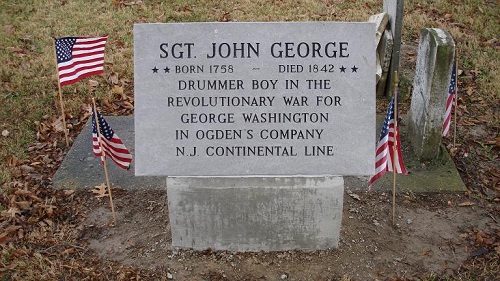
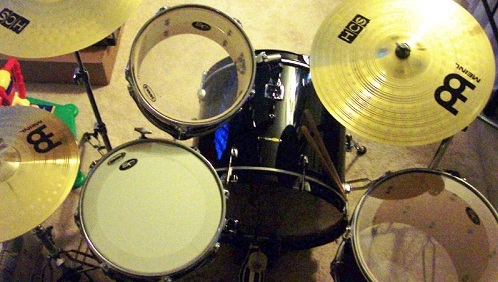
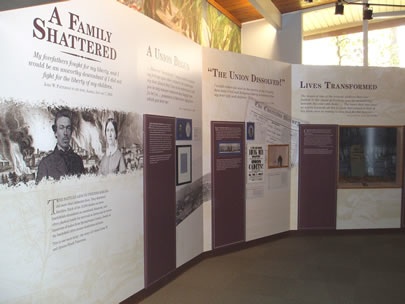
 William A. Phillis III, a descendant of John Williams Patterson wrote an excellent study of his great-great grandfather that was published in the Wilderness Dispatch Vol. 8 No. 2 Summer 2003. In it he writes:
William A. Phillis III, a descendant of John Williams Patterson wrote an excellent study of his great-great grandfather that was published in the Wilderness Dispatch Vol. 8 No. 2 Summer 2003. In it he writes: